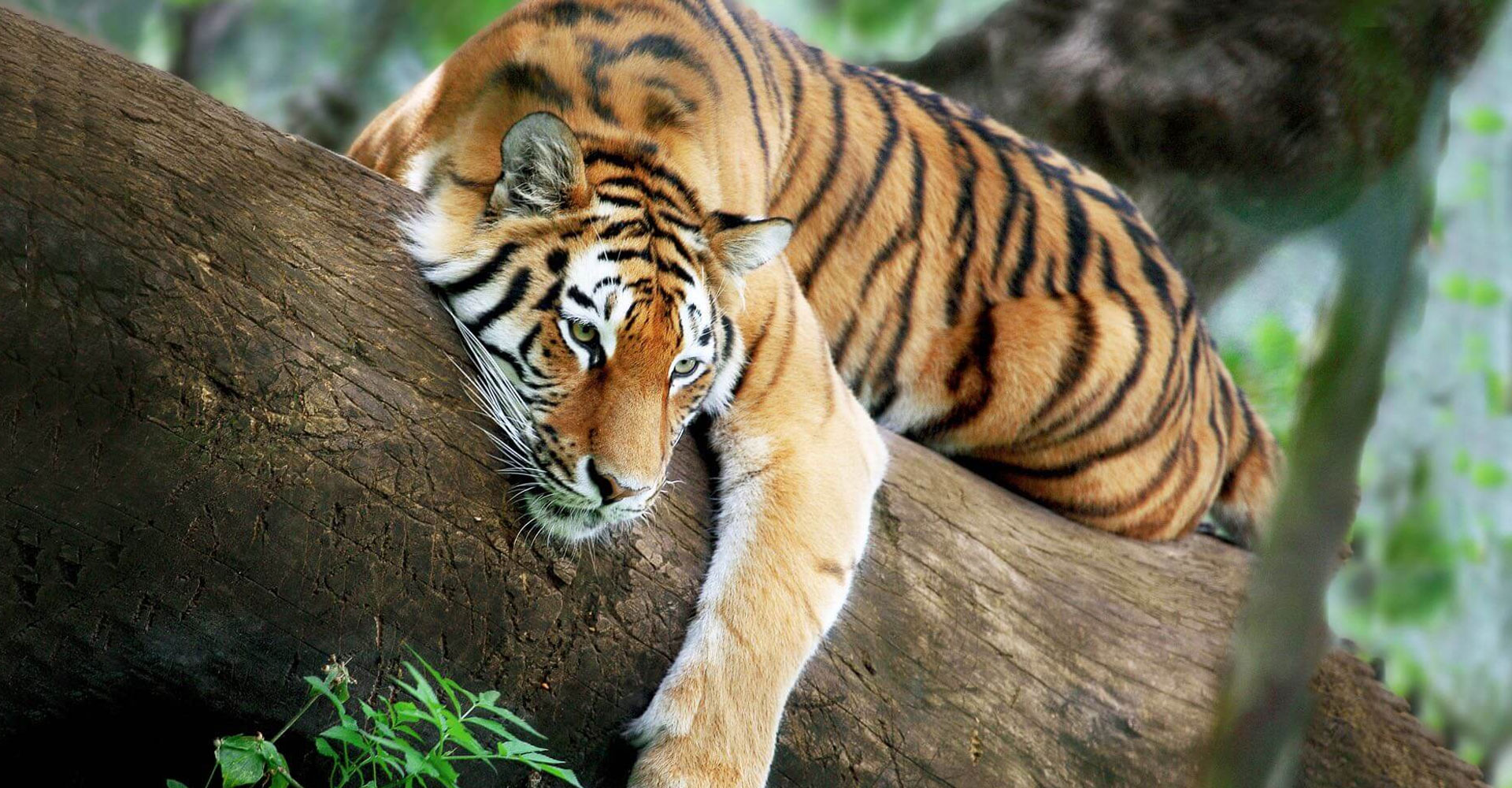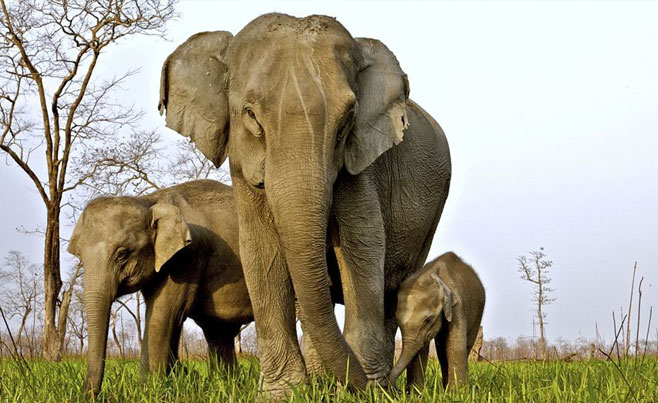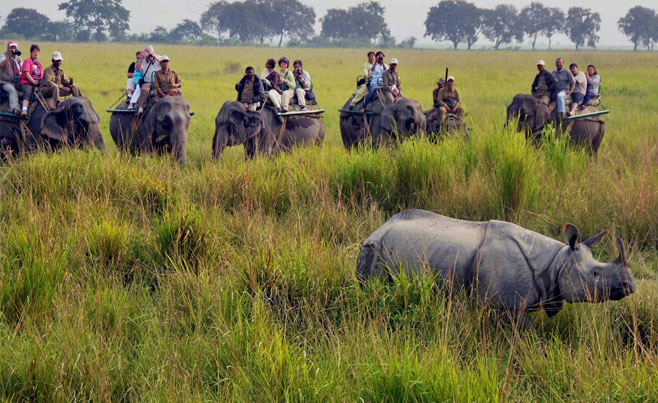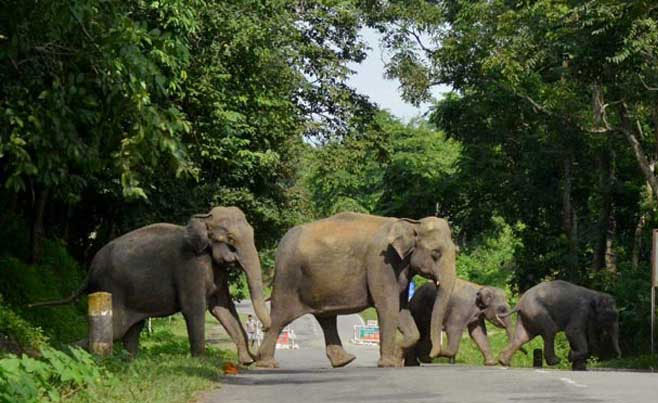Kaziranga National Park
Best Time To Visit
Jan
Feb
Mar
Apr
May
Jun
Jul
Aug
Sep
Oct
Nov
Dec
Most Popular
High Sighting
Park Closed
Low Sighting
About Kaziranga National Park
Species
Elephant, rhinoceros
Overview
Kaziranga's ecosystems, comprising wetlands, alluvial grasslands, and wet tropical evergreen forests, literally burst with life. The phenomenon of annual flooding, which takes place when the Brahmaputra breaks its banks during each monsoon season, has been taking a vicious toll of wildlife in recent years of upstream deforestation… but flooding per se is not bad (75 per cent of the land is normally underwater) as it brings in life-giving alluvial silt, a key reason why Kaziranga is such as bio-rich habitat. Situated in Nagaon and Golaghat districts of Assam on the southern bank of the Brahmaputra, Kaziranga lies at the foot of the Mikir Hills that rise to a height of 1,220 m., some eight km. from Bokakhat. The arterial National Highway No. 37 of Assam State forms the southern boundary of the 428 sq. km. park (proposals to double the area are pending). The Mora Diphlu, Bhengra and the Diphlu rivers also drain the park together with countless smaller streams that feed the many bheels (lakes) that dot the park. Tall dense grasslands, typical of the floodplains of the Brahmaputra, carpet almost half the park area and are interspersed with open forests. The streams and numerous small bheels that form when the floods recede constitute an interconnected riverine habitat. The hills have always offered refuge to the animals from floods, but in recent years human settlements have prevented such escape. Visitors who choose to explore all three of Kaziranga's distinctive habitats in the Western, Central and Eastern Ranges can sample the flavour of this world-famous rhino refuge in a matter of two days. To really savour the wilderness, of course, you would be advised to stay longer. If you set off early in winter, a thin ground mist cloaks the grasslands. Through this mist, wild buffalo, rhinos, elephants and deer tend to appear and disappear like apparitions in a strange and exotic setting. Rhinos are generally seen alone, unless accompanied by calves. Occasionally, two males may be seen sparring. On rare occasions, however, you could conceivably see up to 30 rhinos in the open grasslands from the Dunga watchtower in the Central Range. Many visitors get to see lone bulls grazing a short distance from the main highway before even entering the park. Herds of wild buffalo can be approached quite close on elephant back, but they can also be observed at greater distances, through binoculars, from the tall watch towers built for wildlife viewing by the authorities. As a rule buffaloes are shy, especially in the presence of young ones and lone bulls can be positively dangerous so it is not a good idea to try and walk at any time in the park. Elephants never used to stay all year round in Kaziranga, choosing to depart during the floods. But in recent years population pressures from the surrounding tribals settlements have disrupted elephant migration routes or 'corridors'. They can consequently be seen in the park for 12 months now. They tend to concentrate around the bheels, which offer food and water. Keep your distance from bulls and remember, that strong-looking female you see might just turn out to be a makha (tuskless male). Gaur too have had to adapt to human disturbance outside and are now a more common sight in the park. While this may sound good for tourism, it may prove to be quite disastrous for Kaziranga in the long run as over-grazing is a distinct possibility.
Trails and Excursions
Water is an important constituent of the park with 29 per cent of the area covered by swamps, four per cent by rivers and eight per cent by miscellaneous water bodies. These wetlands are incredibly well-stocked larders that offer almost unlimited supplies of fish, insects and aqua flora, the foundation upon which Kaziranga's birds and animals exist. Watchtowers constructed at different vantage points in the park allow viewing animals at waterholes for extended spells when one can watch the animals with binoculars from a distance without disturbing them. The Central (Kohora) Range: Mihi, Kathpora, Dafflong, Borbeel, Bhaisamari are some of the particularly rich bheels here. Rich in birdlife, these wetlands are among the most productive habitats around which to birdwatch. Eastern (Agartoli) Range: Driving along a small stream with a variety of semi evergreen trees forming a closed canopies along its banks, you could see elephants swimming across in herds, or a young one enjoying a dust bath. Rotting logs are favourite spots for turtle to sunbathe. Perhaps the most magnificent part of Kaziranga, roads from this particularly rich area lead to tall grass habitats and the sandy banks of the Brahmaputra. This is Bengal Florican country. Mihimukh is a particularly good wildlife area. Western (Bagori) Range: This range has a patch of semi evergreen forest near Baguri, Bimali and Haldibari and Dunga, Bimoli, Borbeel, Dafflong and Ramori.
How To Reach
By Air:
Jorhat is about 90 km away from Kaziranga and the closest airport. Transport should be arranged beforehand to receive one at the airport through the lodge. The drive from Guwahati airport is 220 km, but the road is picturesque and extremely motorable. Arrange a pickup and if not vehicles can be rented on the spot.
By Rail:
Jorhat (90 km) Furketing (75 km.) and Guwahati (200 km.) are the nearest stations from where you must take a bus or hire a private vehicle.
By Road:
Bokakhat (23 km) is the closest town. Within the reserve: Four-wheeled vehicles that can handle rough, though motorable, roads make the most sense. These can be rented on a per kilometre basis plus a toll fee. Permission to enter the park must be obtained from the Range Forest Office and an armed forest guard must be present in every vehicle (personal vehicles are also allowed on payment of fees). Walking inside the park is strictly prohibited, but birdwatching on foot (take a guide) outside the park boundary or even along the national highway can be very rewarding.
Tips:
Book your jeep and elephant rides in advance to avoid disappointment. The rhino may look benign and slow moving but it can move extremely fast and if provoked can deliver a vicious bite, or worse. Because they are shortsighted they tend to 'false charge' when spooked. Tall grasses that look flattened can tell you a story… a herd of elephant that had camped perhaps. Searching for such clues and asking lots of questions can multiply your pleasure manifold. Take the time to go on a dolphin watch on the Brahmaputra. It is an incomparable experience. Provisions may be obtained at Guwahati, or perhaps from Jorhat. Bokakhat, the closest town where chemist shops, clothing and shoe stores are found is 23 km. away. Leeches are a reality in the summer months so don't plan to walk about where they can get to you. In any event, it is always a good idea to check your feet when you take off your socks.




